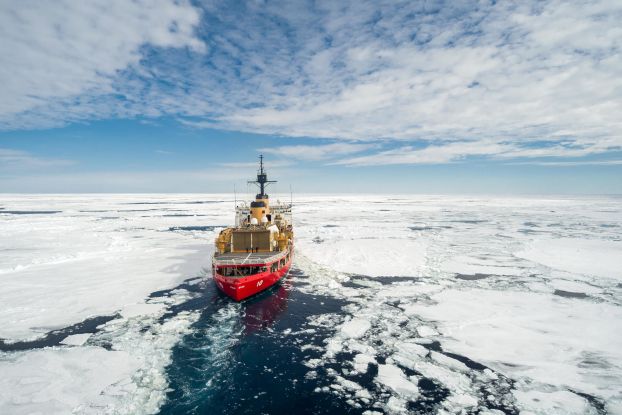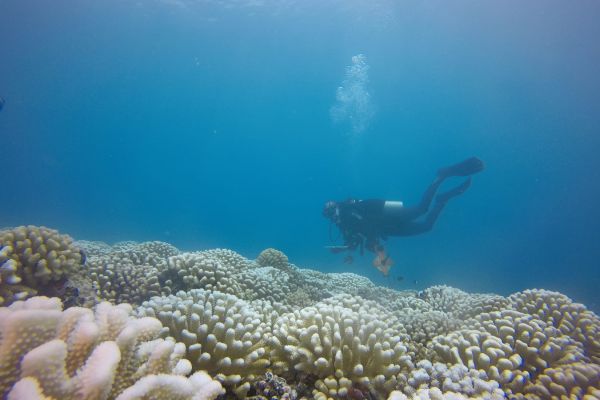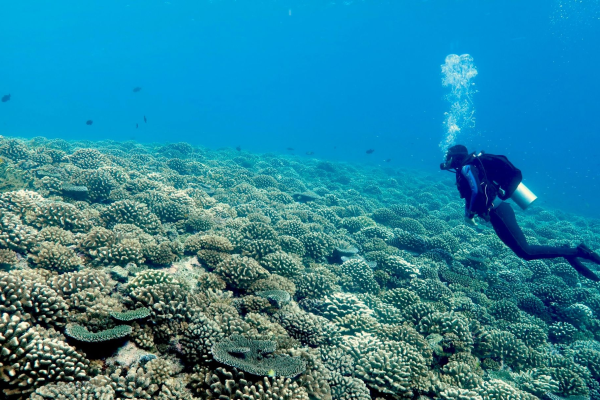For decades, the U.S. National Science Foundation has invested in fundamental research to understand the Earth's climate and its impacts on nature and society.
In recent years, the world has experienced an increase in the frequency of extreme weather events and other climate-driven impacts, such as extreme rainfall, shifts in growing seasons, changes in biodiversity, accelerated sea-level rise and intense heat waves.
From economic instability to food and water insecurity, a changing climate affects the health, prosperity and welfare of people and communities worldwide. NSF-supported research provides a deeper understanding of Earth's climate and how it impacts life and society, securing an economically strong and resilient future by improving the nation's ability to adapt to a shifting climate.
From exploratory to use-inspired research, NSF fosters the translation of knowledge into powerful innovations that enhance climate resilience and protect people and the planet.
 On this page
On this page
Climate vs. weather
Though closely related, climate and weather are not the same thing. Climate is the average or typical weather over a long period — a few years or more in a specific area.
Weather describes the atmospheric conditions at a specific time and can change over minutes, hours, days or weeks.

What we support

Fundamental research
NSF supports interdisciplinary research that provides a deeper understanding of Earth's climate system, including future changes and impacts, and strategies to mitigate or adapt to those changes.

Education and workforce development
NSF supports the creation of a diverse workforce ready to design, implement and manage innovative solutions to mitigate climate change impacts.

Partnerships to accelerate progress
NSF partners with other federal agencies, industry and nonprofits to understand relevant challenges and define research questions; share data, tools, expertise and other resources; strengthen workforce development; and translate research into products and services that benefit society.

Research infrastructure
NSF invests in the computing and physical infrastructure necessary to observe, monitor and model climate systems and test new technologies for resilience.
Our facilities

Featuring over a dozen research vessels ranging in size, endurance and capabilities, the U.S. Academic Research Fleet supports research on the structure, dynamics, chemistry and biology of the ocean. The University-National Oceanographic Laboratory System coordinates fleet activities.
NSF has managed the U.S. science presence across the Antarctic continent for over 60 years. NSF-managed facilities and infrastructure there include:
The U.S. Sub-Seafloor Sampling Program (formerly the International Ocean Discovery Program) marks NSF’s shift to a model of scientific ocean drilling that uses mission-specific platforms and technologies to explore the ocean basins and help researchers study Earth’s evolution and structure. Scientific drilling platforms provide sediment and rock samples (cores), borehole observations, seafloor monitoring, shore-based facilities and opportunities to conduct experiments beneath the seafloor.
The NSF Long-Term Ecological Research (LTER) network advances understanding of the long-term dynamics of populations, communities and ecosystems. NSF currently supports 28 LTER sites of different representative ecosystem types strategically located around the U.S., Puerto Rico, Tahiti, the Arctic and Antarctica.
The NSF National Center for Atmospheric Research (NSF NCAR) provides world-class research programs, services and facilities that support research in atmospheric and geospace science, environmental sciences and geosciences.
NCAR's facilities include the NCAR-Wyoming Supercomputing Center, the Mauna Loa Solar Observatory, two research aircraft, a transportable ground-based radar system and a suite of sophisticated weather and climate models.
Learn more about NSF National Center for Atmospheric Research
The NSF National Ecological Observatory Network (NEON) is a continental-scale ecological observatory featuring cutting-edge sensor networks, instrumentation, observational sampling, natural history archive facilities and remote sensing.
NEON enables research on the impacts of climate and land-use change, water use and invasive species on the nation's living ecosystems.
Learn more about the NSF National Ecological Observatory Network
The NSF Ice Core Facility is a long-term repository for storing, curating and studying ice cores recovered from the glaciated regions of the world.
The collection of cores includes some of the oldest and deepest ice cores, enabling research on past climatic variations, volcanic eruptions, sea-level changes and fundamental processes in ice mechanics.
The NSF National Solar Observatory advances understanding of the sun — as a star, the heart of the solar system and the biggest external influence for life on Earth. It operates the new NSF Daniel K. Inouye Solar Telescope: the largest, most powerful solar telescope on Earth, which recently provided the most detailed images of the solar surface ever recorded.
The NSF Ocean Observatories Initiative features a network of instruments, undersea cables and moorings that span the Western Hemisphere. The network supports research on the physical, chemical, geological and biological processes occurring in coastal and regional areas across the globe.




